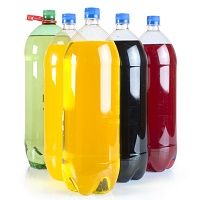Article
Soda, Pop, Coke: Who Drinks What and Where?
Author(s):
In an effort to fight obesity and diabetes and promote healthier diet and lifestyle choices through targeted interventions, public health officials determined which regions of the US have the highest levels of soda and other sugar-sweetened beverage consumption.

Depending on where one lives in the United States, the name for carbonated, sugary beverages changes. Regardless of what they are called, consuming large quantities of sugar-sweetened beverages (SSBs) has been linked to obesity and type 2 diabetes.
Researchers from the National Center for Chronic Disease Prevention and Health Promotion, Centers for Disease Control and Prevention, Atlanta, GA have published the results of a cross-sectional study that identifies SSB consumptions by census regions. Knowing this information can help public health officials and healthcare providers target interventions, and perhaps, reduce obesity and diabetes.
These statisticians used SSB 2010 National Health Interview Survey data form 25,431 US adults. They queried for 4 types of beverages (regular sugar-sweetened carbonated beverages, fruit drinks, sports/energy drinks, and sweetened coffee/tea drinks) in 4 census regions (Northeast, Midwest, South, and West).
Across the nation, approximately 64% of adults consumed one or more SSBs daily. Sweetened coffee/tea drinks were the most frequently consumed SSB among US adults, followed by regular soda. Clinicians should realize that sugar intake from coffees and teas may be high even when frequency of consumption is low.
People living in the Northeast were more likely than others to consume 1 or more SSB daily. Soda was not their SSB of choice—they preferred coffee, tea and energy drinks.
adults living in the Midwest or West were least likely to consume 1 or more SSBS daily.
Adults in the South preferred soda to other SSBs. The prevalence of daily regular soda intake was highest in Mississippi, Tennessee, and Oklahoma. A previous study had determined that the South devotes significantly higher marketing space to sweets (mainly SSBs) than other regions.
An example of a targeted intervention could be to encourage adults residing in the Northeast to reduce their sweetened coffee/tea drink intake. This study appeared ahead of print in the Journal of the Academy of Nutrition and Dietetics.




